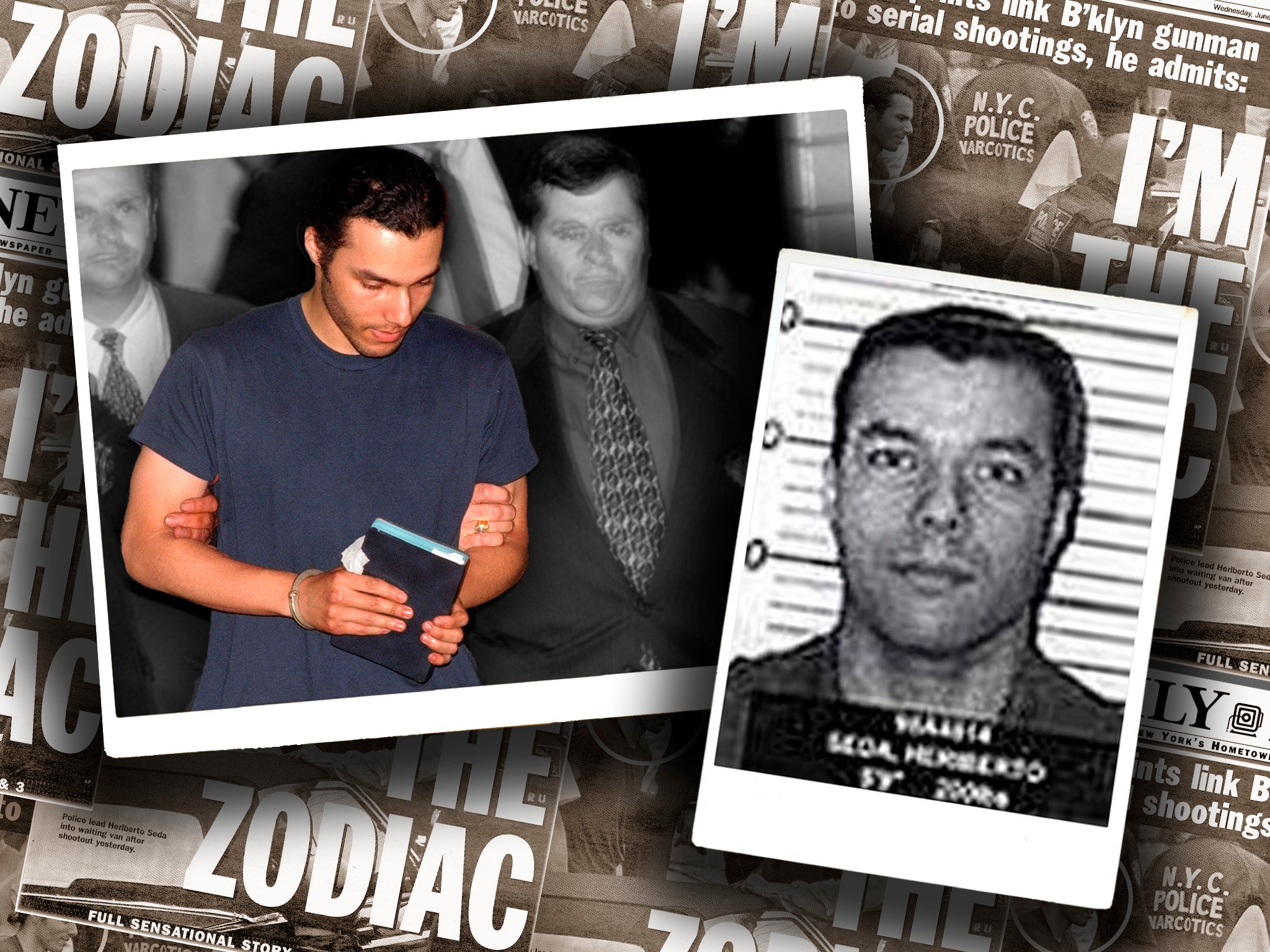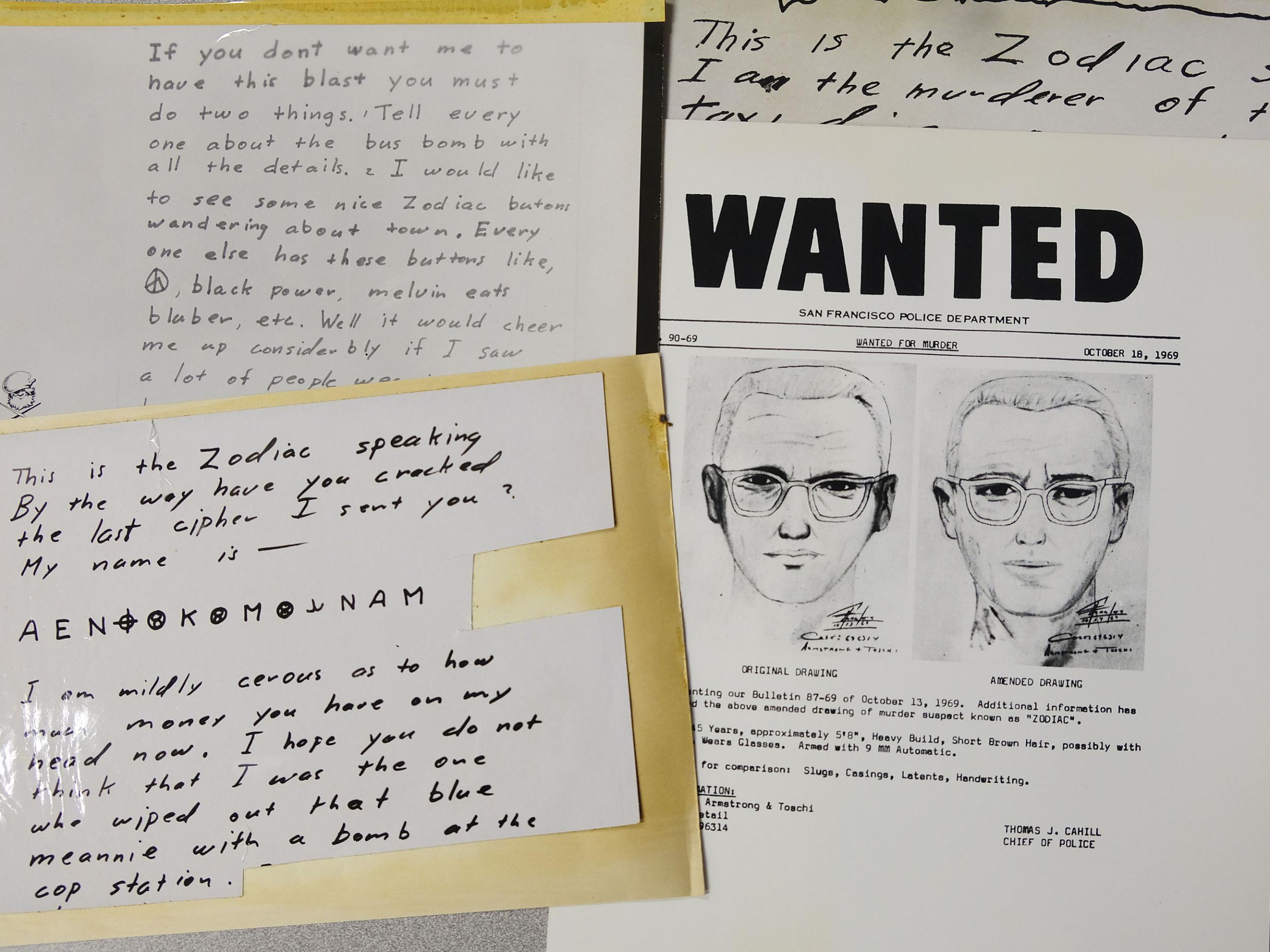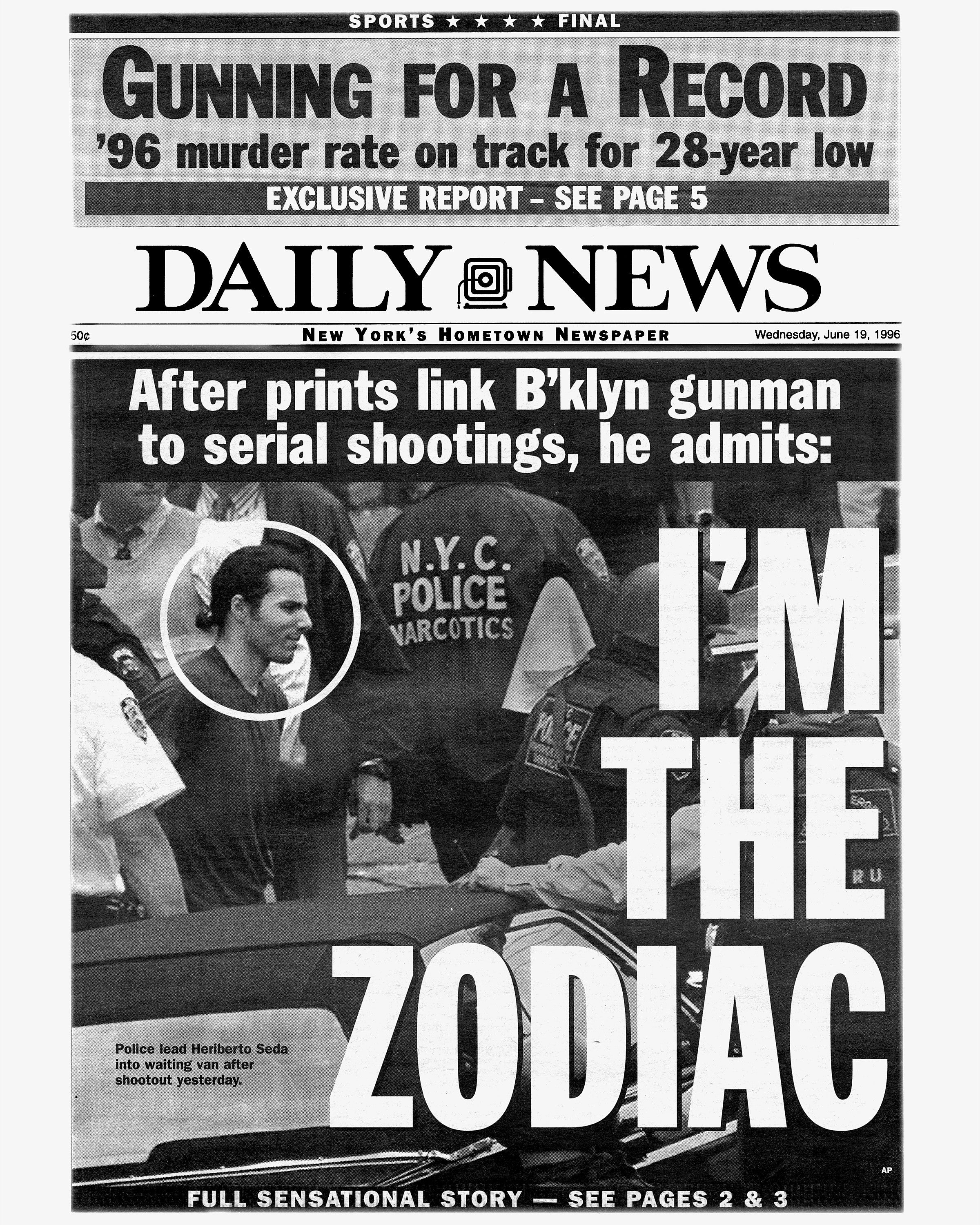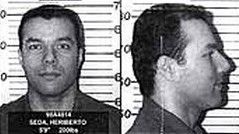A copycat Zodiac Killer terrorised New York years after the California original. This is how he got caught
The Zodiac Killer terrorised California in the late 1960s and beyond, taunting authorities and the media with cryptic messages. But more than 20 years after he first emerged, another killer claiming to be Zodiac launched a similar reign of terror in New York – sparking a police hunt now chronicled in Netflix’s Catching Killers, writes Sheila Flynn

Your support helps us to tell the story
From reproductive rights to climate change to Big Tech, The Independent is on the ground when the story is developing. Whether it's investigating the financials of Elon Musk's pro-Trump PAC or producing our latest documentary, 'The A Word', which shines a light on the American women fighting for reproductive rights, we know how important it is to parse out the facts from the messaging.
At such a critical moment in US history, we need reporters on the ground. Your donation allows us to keep sending journalists to speak to both sides of the story.
The Independent is trusted by Americans across the entire political spectrum. And unlike many other quality news outlets, we choose not to lock Americans out of our reporting and analysis with paywalls. We believe quality journalism should be available to everyone, paid for by those who can afford it.
Your support makes all the difference.It was the summer of 1990 – 16 years after the last-known written communication from the Zodiac Killer – and this time New Yorkers all the way across the country were blanketed in fear.
City residents were being shot in 21-day cycles; an alleged perpetrator, calling himself the Zodiac, was not only claiming responsibility but also displaying eerie similarities to the now-infamous West Coast serial killer.
Like his Californian namesake, the New York murderer used riddles and ciphers. He also goaded police and the media.
By 1990, the metro area – along with the rest of the country – was already all too familiar with the hair-raising stories from the late 1960s about the Zodiac’s taunts and torture. The killer’s nickname had already entered the pop culture lexicon, with 1971’s Dirty Harry being loosely based on the case. Any mention of or association with the long-dormant killer was terrifying.
Five murders had been confirmed as Zodiac victims in California between 1968 and 1969, and the killer claimed at least 37 more in communication with police and the media. With puzzles and codes – some still to be cracked to this day – Zodiac issued threats and rambled about how those he murdered would be his slaves in the afterlife. David Arthur Faraday, 17 and Betty Lou Jensen, 16; Michael Renault, 19, and Darlene Elizabeth Ferrin, 22; Bryan Calvin Hartnell, 20, and Cecelia Shepard, 22; and Paul Lee Stine, 29, were all victims of the Zodiac. All were couples except for Mr Stine.
Then, after sending a final letter to the San Francisco Chronicle in 1974, the Zodiac Killer seemed to go silent.
Until 16 years later, his name popped up at an unlikely crime scene 3,000 miles away in New York.
NYPD Detective Michael Ciravolo, the commanding officer of the Senior Citizens Robbery Unit, was responding to the shooting of an elderly Queens man, Joseph Proce, who was shot in the back as he walked near his home around 2am on 31 May 1990. He survived and was rushed to the hospital.
Det Ciravolo surveyed the scene – and one very jarring piece of evidence left behind by the shooter.
“This note was there, this cryptic, eerie note. At the top is a circle with three symbols,” Det Ciravolo says in Night Terror: New York Zodiac Killer, a newly-released episode of the third season of Netflix series Catching Killers.
The retired officer reads the rest of the note: “This is the Zodiac the twelve sign will die when the belts in the heaven are seen.”
He says: “I thought, ‘Who the f*** are we dealing with?”
The mystery was only starting – and so was the fear.
New York police sent the note to their counterparts in San Francisco, and for more than two weeks they had little to go on. There was no useful fingerprints or ballistics, as the killer had used a makeshift and untraceable zip gun.
Mr Proce, still in the hospital, could also offer little helpful information. Eighteen days after his shooting, however, Det Ciravolo received a call from a detective in Brooklyn: “There’s a note here, and it looks like the note we found at the Proce scene a couple weeks ago.”

“There it was: ‘This is the Zodiac’ – another note,” Det. Ciravolo says in the series.
The note had been mailed to a The New York Post reporter who turned it in to the police, and “the handwriting was spot on.” There was also mention of the fact no grooves would be found on the bullet – a true detail and “only something the shooter knows.”
“And then I noticed on May 31, ‘white old man with cane shoot in front of house,’” the detective says. “This is Joe Proce. But there's also two other shootings preceding Joe Proce that we’re totally unaware of.”
The shooter listed dates and times for the previous attacks, and officers combed through incident reports until they found two matches: Mario Orozco, who survived being shot in the back on 8 March 1990; and German Montenegro, who survived an attack on 29 March 1990.
“We then realise his drawings on the pie slice coincides with the three correct astrological signs of the first three victims,” the detective says. “Orozco, Montenegro, Proce: he had the Taurus, he had the Scorpio, and he had the Gemini. He was three for the three. Now, I'm thinking, ‘There’s twelve signs. He's got a game plan, and his intent is to carry it out.’ How do we get this guy before there are more?”
The new note was “brought down to the lab to try to get latent fingerprints,” he says. “Were there prints on this? Answer, no. So he probably wore gloves. At that point, I got a call from ... detectives in San Francisco, and they let us know this is a copycat. This is not our zodiac. The handwriting didn't match up at all. This didn't help us one bit.”
Scratching their heads with little to go on – and keenly aware that, if their hunch was right, they were up against a ticking clock – detectives zeroed in on the notes.
“He writes about Orion, the Seven Sisters, the belts in the heaven,” he says. “So there's an aspect of this investigation that required some thought outside the proverbial box.”
That included exploration of the occult, with one detective hunting for a text by a dead English witch while consulting with a New York-based warlock – the investigators earning nicknames like “devil desk.” They pored over the astrological aspect, charting out the dates and details.
“What we could see was a 21-day cycle being followed here,” Det Larry Milanesi says in Catching Killers. “We found that the parks department had a very prestigious astronomer. He laid it out. We found that on March 8, three specific constellations were visible at the time of the shooting: Seven Sisters, Taurus and Orion. March 29, all three were visible at the time of the shooting. The next two 21-day periods, the stars were not in the sky at the same time. No shooting. On May 31, the third shooting, at 2.04am, all the stars were in the sky.”
They asked the astronomer to outline the next 21 days – and were told that, on 21 June 1990, the same three constellations would be visible between 1am and 4am.
“It’s never been done before, where you were able to actually predict when a shooting was going to take place within a couple of hours,” Det Milanesi says.

The detectives convinced the chief of police to allocate the resources for Operation Watchdog, blanketing the streets of Brooklyn and Queens with officers “hunting,” as one retired cop puts it in Catching Killers, for anyone who looked like they could be the killer prowling the streets on the night of 21 June. They were dogged and optimistic, but the night came and went with no incidents or related arrests. The detectives were crestfallen that they hadn’t nabbed the New York Zodiac – but were soon informed that the shooter had attacked a new victim in a different district: Central Park.
Larry Parham, whose sign was Cancer, was shot while sleeping but survived. A task force was formed, with the NYPD throwing all of its resources at the Empire State’s homegrown code-loving killer. But cycle upon cycle came and went, and an anxious New York woke up without another shooting. The city slowly calmed, and the task force was wound down. Lead investigators, including Det Milanesi and Ciravolo, retired.
The Zodiac Killer, like the murderer who inspired him, fell silent.
That was until he sent a letter to a newspaper in 1994.
Police seized upon the new morsel of evidence, searching to connect crimes he took credit for with reported incidents. They identified victim Patricia Fonte, a Leo who died after being shot twice and stabbed more than 100 times on 10 August 1992. There was also Jim Weber, a Gemini who survived a 4 June 1993 attack; John DiAcone, a Leo who died after a 20 July 1993 shooting; and Diane Ballard, a Libra who survived injuries that included a gunshot wound to the neck on 2 October 1993. The killer also listed a fifth victim for 11 June 1994, but police never found that individual, despite a thorough search of the park with cadaver dogs and helicopters.
“Looking at the evidence, the handwriting, the victims, we know we were dealing with the same killer” as the 1990 New York Zodiac, Det Joseph Herbert says in Catching Killers.
“But his MO changed,” he adds. “He got away from the pie signs with the zodiac symbols” and included hand-drawn flags.
“The flags put me off a little bit, but military people, Navy people who recognized these flags to be maritime flags ... they were able to break the code fairly quickly,” Det Herbert says.
“When it’s decoded, it says, ‘This is the Zodiac speaking. I am in control. There will be more, Yours truly.’”
A second taskforce was convened, and it seemed that history was repeating itself in a case already involving a copycat. A partial fingerprint had been lifted from a Zodiac letter around the Larry Parham shooting, and police cast a net miles around what they believed to be the Zodiac’s comfort zones. They tried the prints of 4500 people against the partial print. For the second time in less than five years, the search turned up empty. And again, for a second time, the task force was disbanded.
Det Herbert, who’d been one of the taskforce supervisors, trained as a hostage negotiator – and successfully completed his first task in the role on 18 June 1996, talking down a man named Eddie who’d shot his sister and taken her boyfriend hostage.
“[I] proud as a peacock ... that I didn’t blow it, because, you know, they don’t always go good,” he says, and had returned to the scene when he was handed “Eddie’s” written confession to the events.
“I’m reading it, and I’m reading ... I actually had a physical reaction,” Det Herbert says.
He had recognised the lettering and style. “My blood pressure went down like 40, 50 points,” he says.

“I knew it was the handwriting from all the letters I studied for the last two years working the Zodiac case.”
“Eddie” was a nickname; the arrested gunman was Heriberto Seda, a 26-year-old high school dropout from Brooklyn who seemed obsessed with good and evil and wanted to talk about the Bible, detectives describe in Catching Killers. He initially denied he was New York’s Zodiac before confessing.
One mystery however remained. Police never learned how Seda had known his victims’ Zodiac signs.
The serial killer was sentenced to life for killing three people and attempting to kill five more, and he will not be eligible for parole until he turns 264. He told New York magazine in 2004 – in a piece that largely chronicled his romance with a fellow inmate as they both served time for murder in Attica – that he didn’t “actually know anything about astrology”.
He also told the magazine that, if he’d been armed with weapons stronger than a zip gun, his body count might have been higher.
“Lucky for them, it wasn’t a real gun,” Seda said. “I would have shot them twenty times if I’d had an automatic.”
It was a statement that upheld the detectives’ worst fears about the New York Zodiac – and the relief that they, and the rest of the population, felt upon Seda’s apprehension.
As Det Herbert says in Catching Killers, before Seda’s arrest he felt “in my heart that the Zodiac will come back and that he would shoot again and kill again.
“It's in his blood. It’s the way he is.”



Join our commenting forum
Join thought-provoking conversations, follow other Independent readers and see their replies
Comments